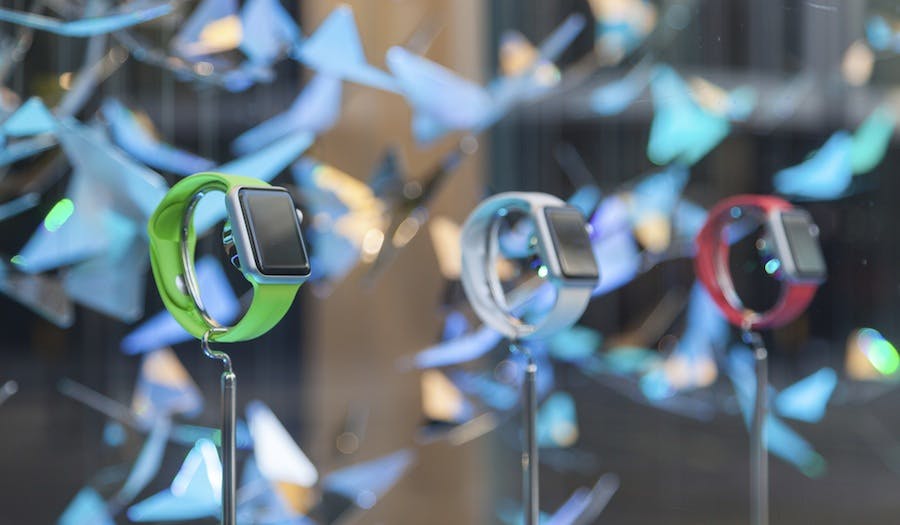Back in September 2014, as Apple CEO Tim Cook announced the launch of a new smart watch, shares of the company declined just after the live announcement. This was followed by heavy scepticism and naysaying by many about what the high priced watch would deliver that its competitors hadn’t already tried.
But then Friday, 10th April 2015 happened and in a few minutes Apple sold around a million units in pre-order sales – a sell-out for the next few months. That’s more smart watches sold in a day than competitor platform Android Wear (which includes products from LG, Motorola, Samsung and others) sold in a year (2014).
Brands that were playing the ‘wait-and-watch’ game before, to gauge reception, are now scrambling to get app-ready for the watch. Early adopters in Australia such as Commonwealth Bank, Qantas, and Woolworths have already announced their apps for when it launches on our shores on 24th April.
The story of Apple Watch so far has some very interesting lessons for current and potential entrepreneurs in the tech space. Here are a few…
Enable great customer experiences
The late Steve Jobs once said, “You have to start with customer experience and work back toward the technology – not the other way around.”
Commonwealth Bank, Qantas and other early adopters are giving their customers access at every touchpoint and getting in first just as they experience the new device. Their speed-to-market will help in fine-tuning the app before the device becomes mainstream, giving them early advantage.
Nick Maher, a Sydney-based software developer behind the TripView app told the Australian Financial Review that he has started working on an Apple Watch app without even seeing the watch. The big brands and Maher are enabling customer experiences as the change happens. They are facilitating the change rather than waiting for it to happen around them and then jump on board.
Use your networks to test
Many entrepreneurs hesitate to ask their networks to test products and give feedback. Testing, when done, is on a limited scale owing to lack of budgets for startups.
Apple Watch Sport is one of its most popular models. And it goes heads up against Fitbit Surge – in the fitness and health tracking devices space where others have tried and failed. To test its fitness capabilities, Apple revealed in a recent ABC interview that the company’s engineers, managers, developers and other employees worked for a year in a high-tech Apple gym to help ensure the product got every point right. Data was collected from employees rowing, running, doing yoga and other fitness activities to perfect the product.
Often, our networks are bigger than we think. With the proliferation of technology, more activities are getting mainstream. Enlist the help of people around you in testing (and testing again) to strengthen the value proposition.
You don’t have to be the first
We are so caught up trying to innovate and disrupt that we forget it is ok not to be a first in the business. Almost every product Apple has launched has had predecessors of sorts. iPod’s were competing with various MP3 players and iPad’s entered a market where Microsoft and Nokia had launched tablet PC’s.
Similarly, Apple Watch launches in a market that has competitor products from Sony, Samsung, LG, Google, Motorola and many others. None of them created as much buzz as Apple, nor sold out in minutes.
In this day and age, entrepreneurs can follow Apple’s example to develop and deliver a product or service that focuses on doing it better than anyone else; rather than trying to be the first.
With barriers to entry really low, especially in the tech startup space, there are more companies formed daily than ever before. But, as former Apple chief evangelist Guy Kawasaki said, “One of the natural consequences of democracy is meritocracy, meaning may the best product win.”
Less is more. More from less
Kawasaki says in his interview that, “This is the Tinder generation.” And Maher says in his that he is approaching the Watch as a platform for looking at information, rather than entering complex information.
People are time-poor. They want to input less data but get more output. As our world shrinks into our wrists, every product or service we put out needs to factor in how little time people have or perceive to have. Every idea should consider how to transform clunky or legacy based systems into super-efficient hubs of insight and activity. As big data does its job crunching numbers, the front end has to be clear, concise and engaging.
The transformative power or impact of Apple Watch beyond its launch phase is yet to be seen. Until then, as Apple did, we need to be the change we want to see around us, take risks and be ready for the future.
——————–
About the Author:

